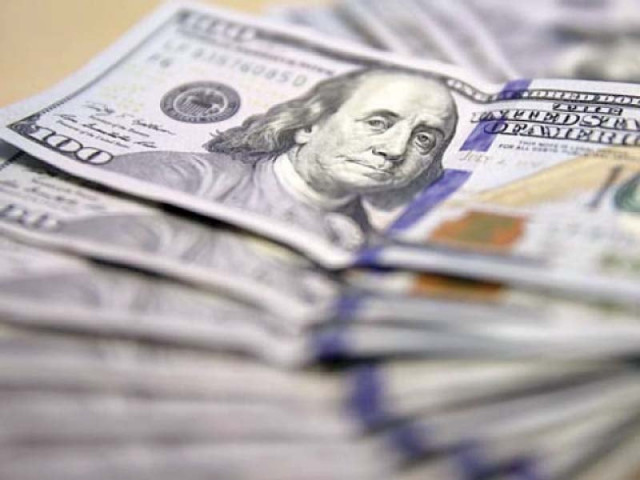Foreign currency reserves remain persistently on downhill course
At $10.79b, they now cover less than two and a half months of imports

Remittances sent home by overseas Pakistanis may increase slightly from the estimate of around $20 billion in FY18. PHOTO: FILE
“Pakistan’s foreign exchange reserves are insufficient for two and a half months of imports,” JS Global Chief Commercial Officer Khurram Schehzad said while talking to The Express Tribune.
Precisely, Pakistan can import goods for a maximum of two months and one week with the help of current reserves. It needs roughly $4.58 billion for one month of imports to keep industries running and meet needs of consumers.
“Reserves that cover three months of imports should be considered satisfactory,” he said.
Pakistan receives $9.2b in foreign loans, but reserves still plunge
Pakistan’s reserves have plummeted 40.47% to $10.79 billion on May 11, 2018 from a record high of $18.14 billion at the end of June 2016, according to data of the State Bank of Pakistan (SBP).
The reserves touched the peak after Pakistan borrowed $6.6 billion from the International Monetary Fund (IMF) under a 36-month Extended Fund Facility that ended in September 2016.
Since then, the reserves have been on the downtrend as economic managers have largely failed to find new markets to increase the country’s exports and restrict growing imports, which was the largest source of shrinking foreign exchange reserves.
Pakistan’s imports stood at $45.56 billion for first 10 months of the current fiscal year, which were more than double the value of exports that amounted to $20.55 billion.
The government let the rupee depreciate by around 9.5% in two rounds - 5% in December 2017 and 4.5% in March 2018 - in a bid to shore up reserves by encouraging exports and discouraging imports.
The move has helped a little bit in improving exports, but has failed to curb excessive imports and added to the country’s external debt.
Pakistan’s accumulated external debt rose $669.3 million due to weakening of the US dollar against other major international currencies and rupee’s depreciation against the US dollar in first half (Jul-Dec 2017) of the current fiscal year 2017-18, according to the SBP’s second-quarter report on the state of Pakistan’s economy.
The outgoing Pakistan Muslim League-Nawaz government has acquired $44.2 billion in external loans in the past around five years to keep foreign exchange reserves at appropriate levels. Loans have been received through the sale of Eurobond and Sukuk in international markets, Chinese financing, investments under the China-Pakistan Economic Corridor (CPEC), project financing and other international grants.
Schehzad said remittances sent home by overseas Pakistanis may increase slightly from the estimate of around $20 billion in FY18 after economies of oil-producing and exporting counties started improving on the back of higher crude prices that hit three-and-a-half-year high at $80 per barrel in the international market.
“However, the increase in remittances may not help take the reserves to higher levels as this may be offset by higher oil imports,” he cautioned.
Pakistan’s economy depends heavily on imported oil and liquefied natural gas (LNG) to fuel its industries as well as meet demand of domestic consumers. It meets almost three-fourths of energy needs through imports, which contribute close to one-third to the overall import bill.
To service maturing debt, Pakistan to borrow Rs22 trillion in 2018-19
Schehzad voiced hope that the tax amnesty scheme aimed at attracting dollars from overseas Pakistanis and efforts made to stop the leakage of reserves following the Financial Action Task Force’s (FATF) warning to put Pakistan on terror-financing watch list may help the country improve reserves in the near future.
However, if the reserves continue to weaken, Pakistan may be forced to go back to the IMF for a bailout package, analysts say.
Published in The Express Tribune, May 20th, 2018.
Like Business on Facebook, follow @TribuneBiz on Twitter to stay informed and join in the conversation.



















COMMENTS
Comments are moderated and generally will be posted if they are on-topic and not abusive.
For more information, please see our Comments FAQ